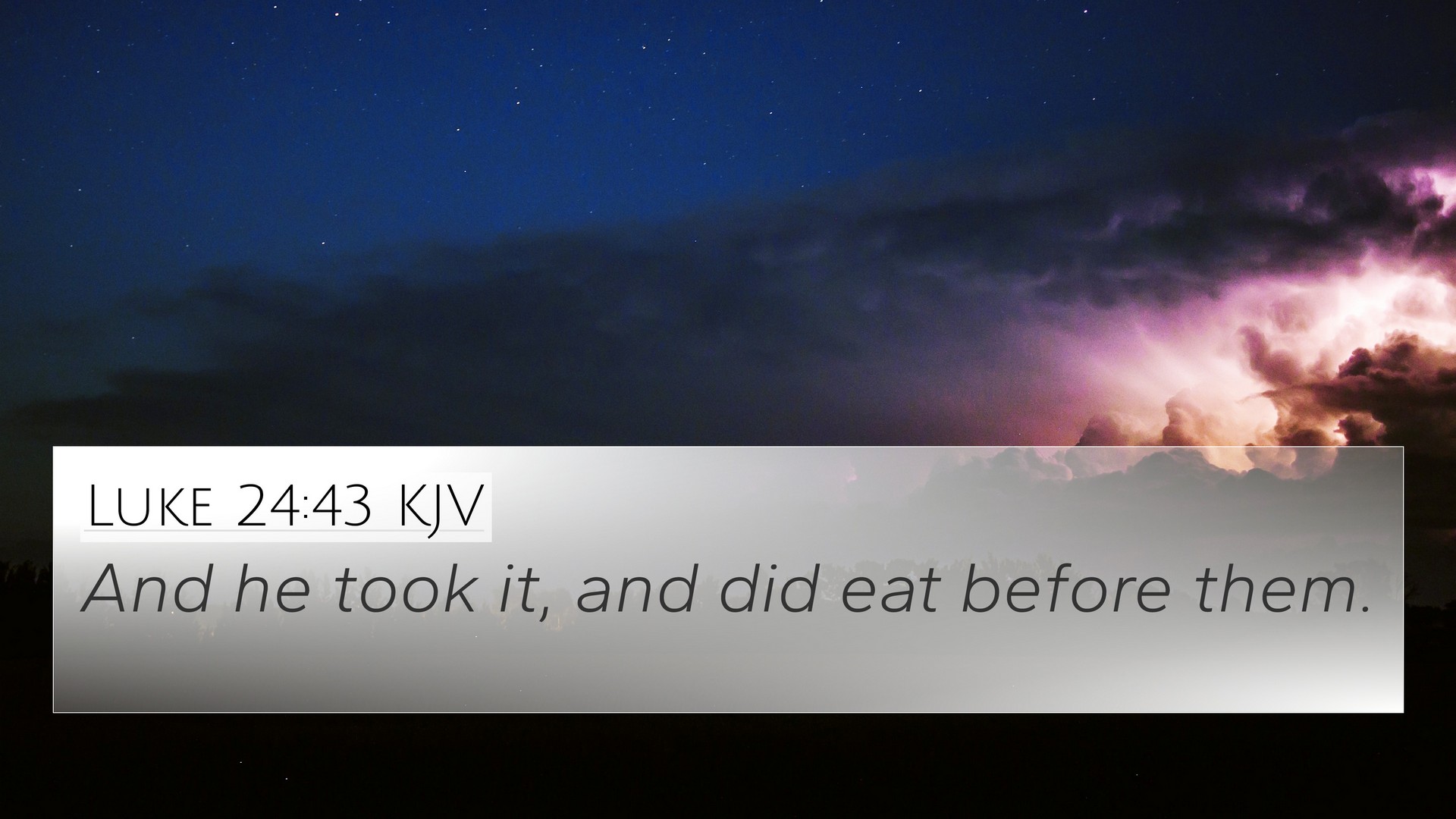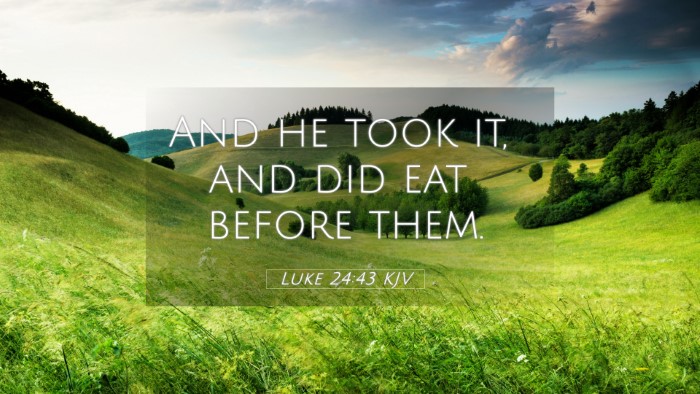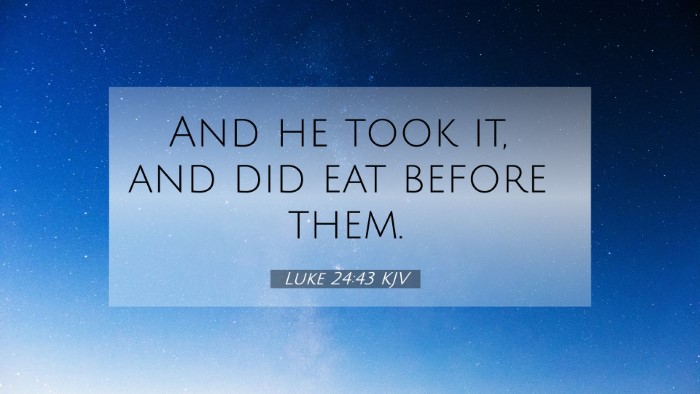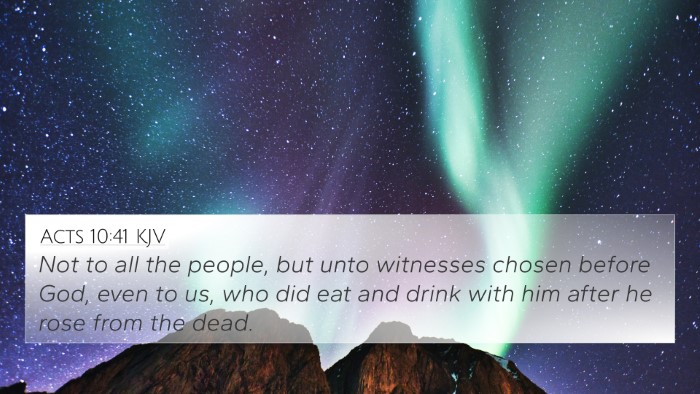Understanding Luke 24:43
Luke 24:43 states: "And he took it, and did eat before them." This verse is a part of the resurrection narrative where Jesus, after His resurrection, demonstrates His physical reality to His disciples. Below is a summary of the insights derived from various public domain commentaries, including those by Matthew Henry, Albert Barnes, and Adam Clarke.
Summary of Interpretations
Luke 24:43 is significant because it reinforces the reality of Jesus' resurrection—He is not merely a spirit or a ghost but has a corporeal body. This act of eating fish underscores His physical presence and serves to comfort and reassure the disciples of His resurrection. Below are different facets of interpretation:
Physical Reality of Resurrection
Matthew Henry emphasizes that this event is clear evidence of the resurrection being a literal, physical occurrence. Jesus' actions were aimed at dispelling doubts among His followers—indicating that the resurrected body has continuity with the earthly body but is transformed.
Symbolism of Eating
Albert Barnes reflects on the act of eating as a means of showing that Jesus is truly alive and interacting with the material world. It is a confirmation of the promise of eternal life, not as mere existence but in a glorified state, maintaining the joys of fellowship and sustenance.
Fullfillment of Scripture
Adam Clarke notes that this moment fulfills the Scriptures regarding the Messiah. This act of sharing a meal illustrates Jesus’ continuity of relationship with His disciples and the intimate nature of His ministry, which included meals and fellowship.
Cross-References to Luke 24:43
Several Bible verses connect and reinforce the themes in Luke 24:43:
- John 20:27 - Jesus invites Thomas to touch His wounds, emphasizing His physicality.
- Matthew 28:9 - The women encounter Jesus and worship Him, emphasizing His risen nature.
- Acts 10:41 - Peter mentions that Jesus ate and drank with them after His resurrection, reaffirming the physical nature of the resurrection.
- 1 Corinthians 15:20 - Paul discusses Christ as the first fruits of those who have died, pointing to the hope of resurrection for believers.
- Luke 24:30-31 - The breaking of bread at Emmaus reveals the identity of Jesus to the disciples, highlighting the importance of meals in recognizing His presence.
- Romans 6:5 - Speaks about being united with Christ in His resurrection, linking our hope to His physical resurrection.
- Philippians 3:21 - Discusses our transformation to Christ's glorious body, encouraging believers through the promise of resurrection.
Thematic Connections
This verse and its context highlight several interconnected themes within the Bible:
- Resurrection - The physical resurrection of Christ is a cornerstone of Christian faith.
- Fellowship - The act of sharing meals is symbolic of community and unity in belief.
- Fulfillment of Prophecy - Demonstrates how Jesus' life, death, and resurrection correlate with Old Testament prophecies.
- Hope of Eternal Life - Reinforces the promise of everlasting communion with Christ.
- Transformation - Christ’s resurrection body highlights the transformation believers will undergo.
Conclusion
In conclusion, Luke 24:43 serves as a compelling link within the New Testament that emphasizes the reality of Christ's resurrection through His actions after rising from the dead. By combining insights from public domain commentaries and cross-referencing with other scriptural texts, one can appreciate the profound implications of this act. Those researching Bible verses and their meanings can utilize tools for Bible cross-referencing to uncover deeper connections and enhance their understanding of scripture.
References for Further Study
For further enhancing your study on this verse, consider using a Bible concordance or a cross-reference Bible study guide to explore more in-depth connections and thematic relationships.



